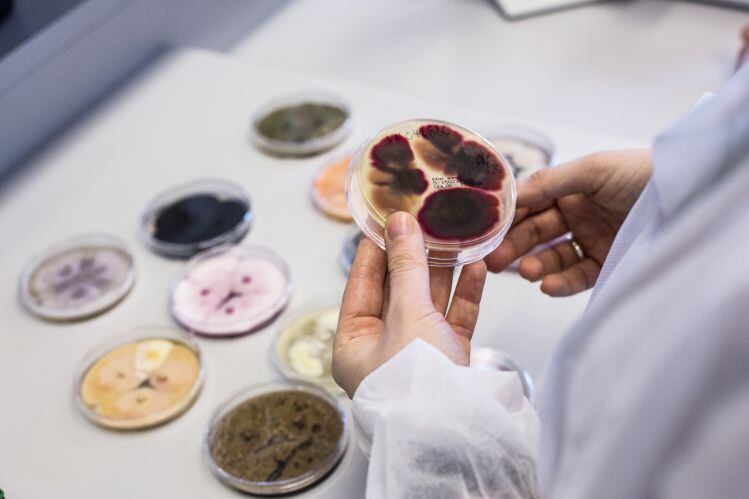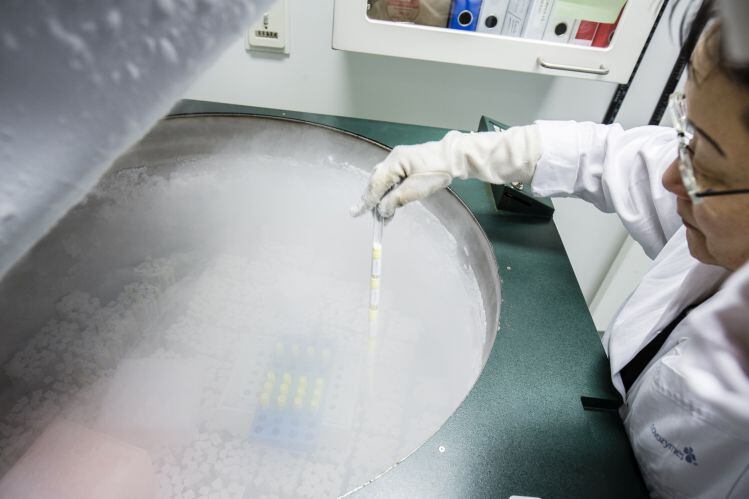Speaking to FoodNavigator-USA as Novozymes – which commands an estimated 48% share of the global enzyme market - reported its full-year results, Arnaud Melin, VP of Food & Beverages, Europe, Americas, said nutrition and starch conversion were the most significant growth contributors, while growth in baking enzyme sales in Europe, the Middle East and Africa more than offset headwinds in the US market for freshkeeping enzymes.
But where are the new opportunities for enzymes in food and beverage?
While enzymes have long been used as efficiency drivers and cost reduction tools by improving yields (extracting more juice from fruits, more oil from oilseeds etc), they are also increasingly being used to improve quality, nutrition and to clean up labels (by enabling companies to avoid some 'chemical-sounding' ingredients on food labels), said Melin.
But there are also opportunities to help companies improve their products in trending application areas such as plant-based proteins and low-lactose/lactose-free dairy, he said, with project underway to improve the flavor, stability, digestibility and functionality of plant and dairy proteins, as well as how to increase protein yields from different plant sources, added Melin.
"We are getting a lot of requests about this as the market grows."
Lactose-free dairy
In the maturing low-lactose/lactose-free market, meanwhile, it's all about incremental improvements, he said, citing the company's recent breakthrough innovation Saphera, a lactase enzyme that breaks down naturally occurring lactose* (milk sugar) into glucose and galactose - which taste sweeter than the intact lactose – and allows formulators to reduce added sugars.
Suitable for yogurt and other fermented milk products, plus milk drinks, and ice cream, Saphera (which is produced by Bifidobacterium bifidum) is more effective than conventional yeast-based lactases, claimed Melin, because it leaves less residual lactose, and helps to deliver a stable sweetness and taste throughout shelf life with less risk of off flavors, allowing for a cleaner label.
“It’s a growing opportunity all over the world, but particularly in markets such as Brazil, in which up to 70% of the population has some degree of lactose intolerance, so there is a lot of potential. All of our customers are also interested in reducing added sugar in dairy products, so it’s a growing opportunity.”
Baking, palm oil extraction, enzymatic interesterification
From a category perspective, meanwhile, the #1 growth area is baking, he said, noting that Novozymes had recently launched products that improve the stretchability of flour and corn tortillas and flatbreads (making them stronger and more extensible over their shelf-life) and helping manufacturers reduce or replace unwanted ingredients such as gums, emulsifiers, vital gluten, L-cysteine or sodium meta-bisulfite (SMS).
It has also developed an enzyme (Palmora) that improves yield from palm oil extraction and is working on a new generation of enzymes for use in the production of sugars and sweeteners from corn and sugar beet.
With the deadline to phase out partially hydrogenated oils (PHOs) fast-approaching, meanwhile, Novozymes is also working with customers on the enzymatic interesterification of oils and fats, whereby enzymes are used to re-arrange the structure of fatty acids on the glycerol backbone of a triglyceride in order to alter a fat’s melting properties, functionality and plasticity.
While 'interesterification' is not a consumer friendly term, the technology is becoming increasingly popular as an alternative to partial hydrogenation, which turns liquid oils into semi-solid fats at room temperature, but also creates harmful transfats, he said.
Frequently, in order to replicate that same semi-solid quality, manufacturers will blend fully hydrogenated oils (which do not create trans fats, but can be very hard) with liquid vegetable oils and then put them through enzymatic interesterification.
Recent innovation Quara LowP, meanwhile, is generating a buzz in the oilseed industry as it helps processors remove naturally occurring gums when refining oil from canola and soy – which can deliver meaningful improvements in yield, reduce chemical use (as enzymes do the job instead of chemicals), and increase the value of by-products, improving margins in a tight market, he said.
Innovations in wet corn milling
Perhaps the most exciting recent breakthrough for the company, however, is frontia, a brand new enzyme enabling corn millers to separate starches from fibers and other components at the wet milling stage, and obtain significantly more starch and gluten from corn while using less water and energy, he said.
“No enzymes [that do this] exist in the world, so it’s a brand new application that leverages learnings we’d obtained from biofuels, so it’s really a next generation technology [enzymes had not previously been used in the first step of starch processing].”

Enzymes and the GMO factor
But what about the GMO factor?
While enzymes themselves are not ‘GMOs,’ and also serve as processing aids (so would not be subject to federal GMO labeling legislation even if they were GMOs), some of the micro-organisms used to produce them are genetically engineered, which means Novozymes does get a lot of questions from customers about whether it can describe its wares as ‘Non-GMO’ he said.
"We give our customers complete transparency about how our products are made, and since we’ve done that, the level of concern has definitely died down.
“Two years ago, we also started to talk to the Non-GMO Project via our industry association the ETA [Enzyme Technical Association] to share with them what enzymes are and how they are made, and to point out that enzymes are not GMOs.
"We also stressed how important enzymes are to more sustainable food production, [because they help increase yields, can be used instead of chemicals, are stable and biodegradable].”
Enzymes also work at low temperatures and moderate pH levels, making them the most environmentally-friendly catalysts, he argued.
“It was then urged that products produced with enzymes [produced by GE microbes] should still be eligible for Non-GMO Project verification when the enzymes are processing aids."**
How are enzymes used in the food industry?
- Baking: To improve softness, freshness and dough strength
- Brewing: To improve filtration and flavor of beer and ensure raw material optimization
- Health & nutrition: Make foods safer by removing carcinogenic and allergenic ingredients
- Juice: Increase yields and improve clarity of juice
- Oils & fats: Harden fats without unhealthy trans-fatty acids
- Starch: Produce sugar syrups more simply and efficiently
Global reach
The world’s largest provider of enzyme and microbial technologies, Novozymes is based in Copenhagen, Denmark, with a North American HQ in Franklinton, North Carolina.
The North American operation, which employs more than 1,200 people, operates the USA’s largest multi-purpose enzyme manufacturing facility in North Carolina, and opened a second enzyme facility in Nebraska in 2012.
Its customers operate in biofuels, detergent, food, feed and bioagriculture, and almost a quarter of its employees work in R&D.
* Lactose-intolerant individuals lack the digestive enzyme lactase needed to break down lactose (milk sugar), which occurs naturally in dairy products. To make lactose-free products, dairy companies use lactase enzymes to split lactose to glucose and galactose – two simpler sugars which are more easily digested.
**The Non-GMO Project treats an enzyme as a GMO when the enzyme is produced by a GMO, even though the enzyme is a protein that contains no genetic material.
According to the Non GMO Project: “Processing Aids used in the manufacture or processing of a finished product, ingredient, or input shall be out of the scope of review if present in the finished product at less than 0.5% and not declared on the retail ingredient panel or the input disclosure documentation of a wholesale product. For the purposes of this Standard, fermentation microorganisms are not considered to be Processing Aids.”
What are enzymes and how are they produced on a commercial scale?

Enzymes are proteins that serve as catalysts (for example the enzyme amylase, found in saliva, breaks down starch into simpler sugars that are then further broken down in the small intestine), and they are widely used in the food industry in everything from brewing to corn milling.
But as they typically serve as processing aids, and are not listed on food labels, most consumers are unaware of them.
Novozymes has brought several new enzymes to market in the past five years, a process that begins with the customer, says Arnaud Melin, VP of Food & Beverages, Europe, Americas.
“We start with customers and ask them what they want to do, increase yield, reduce waste, improve stability, and so on, and then based on our experience, we hypothesize what kind of enzyme might deliver that functionality, and then screen the enzymes we have in the library.
“If we don’t have what we’re looking for, we do still go out into nature, which is how traditionally we identified new microbes and enzymes, collect and grow organisms and see what functionality the enzymes/proteins have, and we still do that.
In other words, the search is pretty targeted, he explained: “It’s one thing to discover an interesting new enzyme and another to say that particular enzyme will be of interest for this particular food application.”
Given that one soil sample can contain thousands of microorganisms, each capable of producing thousands of different enzymes, screening technologies makes the search for an enzyme with certain desired qualities easier, he said.
Having identified the microbes and enzymes of interest, Novozymes then locates the gene that tells the microorganism in question to produce the desired enzyme.
By transferring the gene to one of its “production microorganisms” such as Aspergillus oryzae (a fungus used for centuries to make soy sauce), large quantities of the enzyme can potentially be grown quickly in big fermentation tanks with the right balance of nutrients, temperature, pH and airflow.
After the fermentation, the enzymes are separated out, and the remaining broth is treated to remove any living and intact microorganisms and then sold for use as farm fertilizer.
